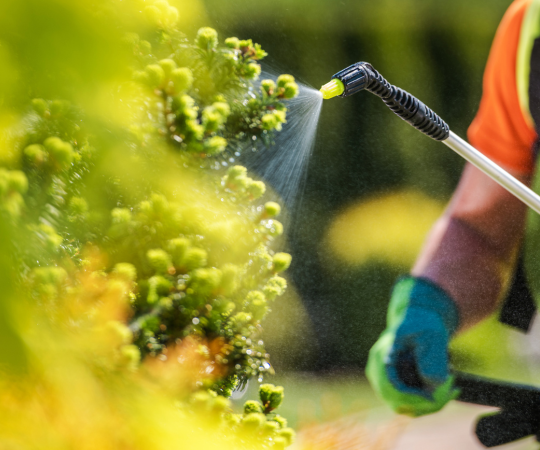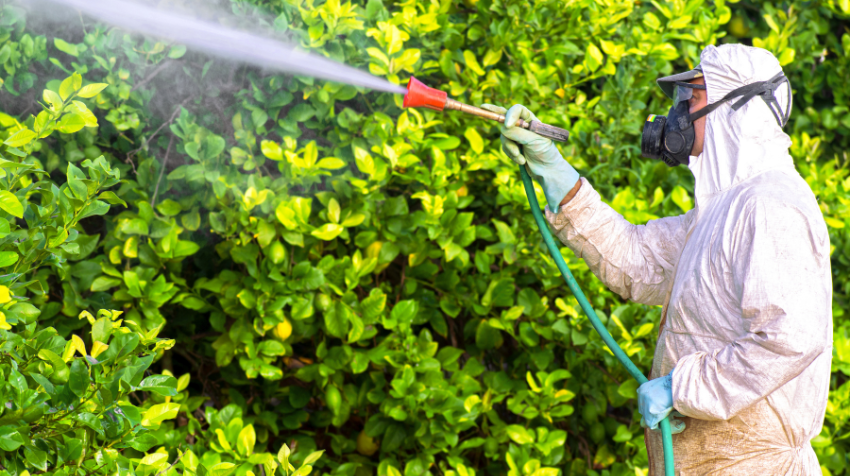Growth Revitalized: Exploring Organic Solutions for Tree Fertilization
Are you struggling to keep your trees healthy and vibrant? Do you find yourself confused by the various fertilization options available on the market? Fear not, for demystifying tree fertilization is easier than you think. By using organic solutions, you can boost your trees’ growth while also promoting a healthier environment.
In this article, we will explore the basics of tree fertilization and why organic options are beneficial. We will discuss different types of organic fertilizers and how to choose the right one for your specific needs. Additionally, we will provide application tips to ensure that your trees receive the proper nutrients they need to thrive.
With these insights, you’ll be equipped with all the knowledge necessary to care for your trees in an eco-friendly way.
Understanding the Basics of Tree Fertilization
To truly enhance the health and vitality of your flora, it’s essential to grasp the fundamental principles of fertilization. First off, you need to understand that trees require a blend of macronutrients and micronutrients for optimal growth.
Macronutrients such as nitrogen (N), phosphorus (P), and potassium (K) are required in larger amounts, while micronutrients like iron (Fe), manganese (Mn), and zinc (Zn) are needed in smaller quantities. These nutrients can be found naturally in soil or through fertilizers.
Tree fertilization is typically done during the growing season when the tree is actively producing new foliage and roots. It’s important to apply the right amount of fertilizer at the right time to avoid overfeeding or underfeeding your tree.
With proper fertilization, your tree will grow stronger roots, produce more leaves, resist pests and diseases better, flower more prolifically, bear fruit more abundantly, and generally look healthier overall.
Now let’s delve deeper into how organic tree fertilization can benefit your trees even more!
Benefits of Organic Tree Fertilization
You might be surprised at the benefits that come with using natural methods to nourish your trees. Organic tree fertilization not only helps your trees grow stronger and healthier, but it also has a positive impact on the environment.
Here are three benefits of organic tree fertilization:
- Reduced environmental pollution: Conventional chemical-based fertilizers can leach into groundwater and harm wildlife in nearby streams or rivers. Organic fertilizers, on the other hand, rely on natural ingredients like compost, fish emulsion, and bone meal to provide nutrients without polluting the environment.
- Improved soil health: Organic fertilizers contain beneficial microorganisms that promote healthy soil structure and reduce erosion. These microorganisms break down organic matter into nutrients that are easier for plants to absorb.
- Better plant growth over time: Synthetic fertilizers provide a quick burst of nutrients but can damage roots over time. Organic fertilizers may take longer to show results but will help build up strong root systems that lead to sustained growth.
By choosing organic tree fertilization methods, you can not only improve the health of your trees but also contribute towards a sustainable future for our planet.
In the next section, we’ll explore some common types of organic fertilizers you can use for your trees’ growth needs.

Types of Organic Fertilizers
Discovering the various types of organic fertilizers available can aid in promoting a sustainable ecosystem, while enhancing your trees’ nutrition.
One type of organic fertilizer is compost, made from decomposed plant and animal matter. Compost provides a slow-release source of nutrients for trees and improves soil structure by increasing its ability to hold water and air. It also promotes the growth of beneficial microorganisms that help break down organic matter into absorbable nutrients for tree roots.
Another type of organic fertilizer is bone meal, made from ground-up animal bones. Bone meal is high in phosphorus, essential for root development and flower production. It also contains calcium, strengthening cell walls and improving overall tree health. However, it should be used sparingly to avoid excessive amounts that can lead to phosphorus runoff, harming aquatic ecosystems.
Understanding the different types of organic fertilizers available can help you choose the right one for your trees’ specific needs.
Choosing the Right Fertilizer for Your Trees
When it comes to giving your trees the nutrients they need, it can be overwhelming to decide which fertilizer is best; it’s like trying to choose a flavor at an ice cream shop with too many options. However, choosing the right fertilizer is crucial for the growth and health of your trees.
Organic fertilizers come in different forms such as compost, manure, bone meal, fish emulsion, and more. Each type of fertilizer has varying levels of nitrogen (N), phosphorus (P), and potassium (K) that cater to specific tree needs.
To determine which organic fertilizer is best for your trees, you must first consider their current condition and what nutrients they lack. For instance, if your tree has yellowing leaves or stunted growth, then it may require a nitrogen-rich fertilizer like blood meal or feather meal. On the other hand, if your soil lacks phosphorus and potassium but has enough nitrogen from previous fertilization or natural sources such as rainwater or decaying matter in the soil, then bone meal or wood ash would be ideal.
Remember that applying too much of any fertilizer can harm your tree’s roots and overall health.
Application Tips for Organic Fertilizers
Get the most out of your organic fertilizers with these simple application tips.
First, make sure to spread the fertilizer evenly around the base of the tree, taking care not to apply too close to the trunk as this can damage the bark. Use a garden fork or similar tool to gently work the fertilizer into the top layer of soil, allowing it to penetrate deeper over time.
Secondly, be mindful of when you apply your fertilizer. It’s best to wait until after a rainfall or watering session so that the nutrients can easily reach down into the roots. Additionally, avoid applying during periods of drought or extreme heat as this can cause stress on your trees.
By following these application tips, you’ll be able to effectively boost your tree’s growth and overall health with organic fertilizers.
For other tree care tips for healthy growth, consider implementing practices such as regular pruning and mulching. These techniques can help maintain proper airflow and moisture levels in the soil, which are crucial for optimal tree growth and development.

Other Tree Care Tips for Healthy Growth
Want to help your trees thrive? Check out these other tips for keeping them healthy and happy!
First, make sure to water your trees properly. Young trees need at least an inch of water per week, while mature trees may need more depending on the weather conditions. It’s important to water deeply and infrequently rather than frequently and shallowly, as this encourages deeper root growth.
Secondly, pruning is essential for maintaining a tree’s health and appearance. Regular pruning can remove diseased or damaged branches, improve air circulation and sunlight exposure, and shape the tree’s growth to your liking. However, it’s important to prune at the right time of year depending on the type of tree you have.
For instance, fruit trees should be pruned in late winter or early spring before they start budding, while deciduous trees are best pruned in late fall or early winter after their leaves have fallen off.
By following these simple tips for watering and pruning your trees, you can ensure that they stay healthy and strong for years to come!
Frequently Asked Questions
How often should I fertilize my trees with organic fertilizer?
You want your trees to thrive, but you’re not sure how often to fertilize them. Well, it just so happens that the answer depends on a few factors.
The type of tree, soil quality, and age all play a role in determining when to fertilize. However, as a general rule of thumb, it’s recommended to fertilize once or twice a year with organic fertilizer.
Organic fertilizers provide slow-release nutrients that won’t harm the environment or your trees. So if you want healthy and robust trees, make sure to give them the proper nourishment they need by using organic fertilizer regularly.
Can I mix different types of organic fertilizers together for better results?
Mixing different types of organic fertilizers together can be a great way to improve the health and growth of your trees. By combining various products, you can provide a wider range of nutrients and minerals that your trees need to thrive.
However, it’s important to make sure that the ingredients in each fertilizer are compatible with each other, as some combinations may not work well together or could even be harmful to your trees. It’s also crucial to follow the instructions for each product carefully and not over-fertilize your trees, as this can lead to nutrient imbalances or even damage their roots.
Ultimately, by taking care when mixing organic fertilizers, you can create a powerful solution for boosting the growth and vitality of your trees.
Are there any potential negative side effects of using organic fertilizers on trees?
Using organic fertilizers on your trees can have a lot of benefits, but it’s important to be aware of potential negative side effects as well.
One interesting statistic is that over-fertilizing with any type of fertilizer, including organic ones, can lead to nutrient imbalances in the soil and actually harm your trees instead of helping them. This is why it’s important to follow recommended application rates and not exceed them.
Additionally, some organic fertilizers may attract unwanted pests or promote excessive growth that makes the tree more susceptible to disease or damage from storms.
However, overall the benefits of using organic fertilizers for tree growth outweigh the risks when used properly and in moderation.
How do I know if my trees need fertilizer or if they are getting enough nutrients naturally?
If you want to know whether your trees need fertilizer or not, there are a few things you should look out for. First, check the leaves – if they’re yellowing or falling off excessively, it could be a sign that your tree is lacking nutrients.
Another thing to consider is the quality of the soil around your tree – if it’s compacted or has poor drainage, this can also affect nutrient uptake.
Finally, pay attention to any signs of pests or disease on your tree – these can also be indicators that your tree isn’t getting enough nutrients.
By keeping an eye on these factors and considering organic solutions like compost and mulch, you can help ensure that your trees stay healthy and vibrant.
Can organic fertilizers be used on all types of trees or are there specific ones that work better with certain species?
When it comes to using organic fertilizers on trees, there are a few things to keep in mind. While many different types of trees can benefit from organic fertilizers, some species may respond better than others.
Factors such as soil type and climate can also play a role in determining which fertilizer is best for your tree. In order to ensure that you’re using the right product, it’s important to do your research and consult with a professional if needed.
Additionally, it’s worth noting that while organic fertilizers can be highly effective at promoting healthy growth and fruit production, they may take longer to show results than their chemical counterparts. So if you’re looking for a natural way to give your trees a boost, be patient and persistent in your efforts!
Conclusion
Congratulations! You now have a good understanding of tree fertilization. By using organic solutions, you can give your trees the boost they need for healthy growth without harming the environment. Remember that choosing the right fertilizer and applying it correctly are crucial to getting the best results.
Organic fertilizers offer many benefits over their chemical counterparts, such as improving soil health and promoting beneficial microorganisms. They also tend to release nutrients more slowly, ensuring that your trees get a steady supply over time.
With patience and proper care, your trees will thrive and add beauty to your landscape for years to come. So go ahead and give them some love – they’ll thank you with abundant foliage, strong roots, and maybe even a little bit of shade!
In conclusion, if you want to be an eco-friendly gardener who takes pride in nurturing nature’s gifts, then organic tree fertilization is definitely worth exploring. The rewards are priceless – healthier trees mean cleaner air, better water retention in soil, enhanced wildlife habitats, and a sense of fulfillment knowing that you’re doing your part in preserving our planet’s natural resources.
Don’t wait any longer; try out some of these tips today for explosive tree growth that will leave everyone green with envy!
Related Source


